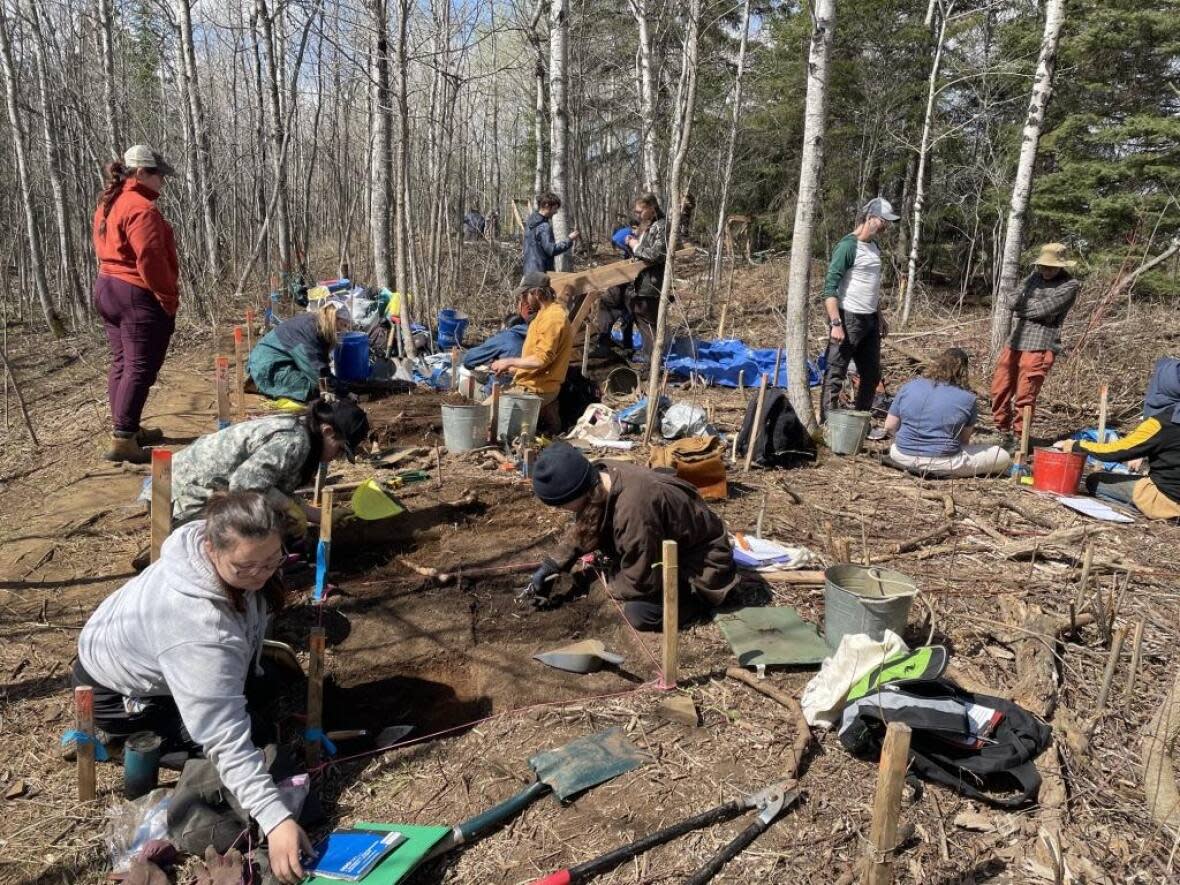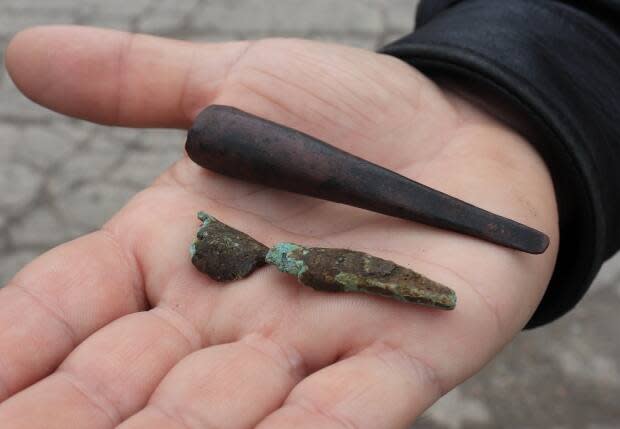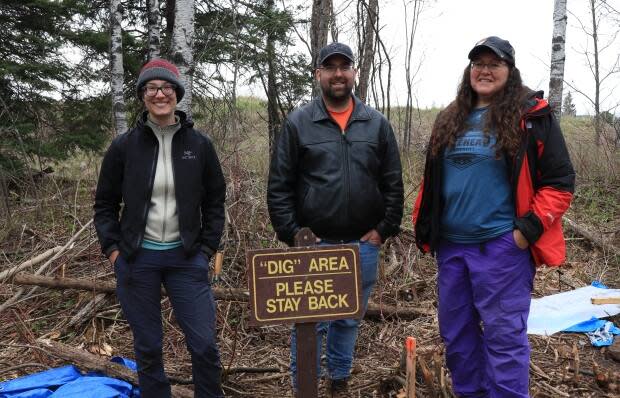Archaeological sites are plentiful at Lakehead's Thunder Bay campus. Here's what students are finding

Walking along the McIntyre River on Lakehead University's Thunder Bay campus, it's easy to miss the thousands of years of history beneath one's feet.
Students have been digging up the Thunder Bay, Ont., campus for treasure for years, where there are more than a dozen archaeological sites located on the traditional territory of Fort William First Nation.
Thousands of artifacts have been extracted which show evidence of people quarrying and using local stone, called taconite, to make tools.
"Stone tools were important for survival because they provided people with equipment to hunt, prepare hide clothing and shelter, and other necessities," said Matthew Boyd, chair of Lakehead University's anthropology department, in a news release.
And the young archaeologists haven't had to dig very deep to find them.
"Everything in the boreal forest, for the most part, is within the first 30 centimetres," Clarence Surette, bio-archaeology technician for Lakehead's anthropology department, told CBC News. "You have 10,000 years of history in 30 centimetres."

While the exact dates of the sites are currently unknown, they've been estimated at between 4,000 and 7,000 years old, at a time when the shore of Lake Superior was believed to be much higher than today, covering much of the city.
First field school in 8 years
This spring marked the anthropology department's first field school since 2015, giving students the chance to explore one of the campus's archaeological sites from the middle period to unearth more artifacts.
They start with 50-by-50 centimetre test squares before committing to metre-block excavations, which offer "a small snapshot of the picture of how life would have been," said Surette.
The field school was supported by:
Lakehead University's Department of Anthropology.
The Niijii Indigenous Mentorship Program.
Woodland Heritage Northwest.
Ontario Archaeological Society.
Parks Canada.
These sites reveal several activities along both sides of the river, where people made stone tools, camped, hunted, and broke open animal bones, said Lakehead research associate Jill Taylor-Hollings, president of the Ontario Archaeological Society.
"It provides students a learning experience that they can take into their future and it enables them to then become hired on as archaeological technicians with companies across Ontario, and also just furthering their experience for graduate school," Taylor-Hollings said.

From copper spear points to hammerstones, seeing students hold pieces of history is always an exciting feeling, added Surette.
"They're the first person to actually see and touch the object that somebody would have touched many years ago, and I think that for a lot of people, it kind of gives them a little bit of a connection to that time period and those people that were here before," he said.
For graduate student Steph Skelton, who helped with this year's field school, their favourite find from the site was the chopper.
"People flaked off pieces of it and then used it to get into bone marrow," they explained. "It's a very elegant tool, it's easy to make ... and it does a really good job."
New Indigenous training program
This year also saw a new Indigenous archaeological technician training program, which ran from May 15 to 19. The program was developed by Woodland Heritage Northwest and the Ontario Archaeological Society, for the Waasigan Transmission Line Project.
The Hydro One project proposes a new double-circuit transmission line between Lakehead Transformer Station in Shuniah and Mackenzie transformer station in Atikokan, and a new single-circuit transmission line between the Mackenzie transformer station and Dryden transformer station.
Part of the proposal has been engaging with Indigenous and Métis communities that will be affected by the lines.
Indigenous people representing eight communities participated in the week-long archaeological dig at Lakehead. They were taught some of the basics, like mapping, site surveying and excavation, and material culture identification, "so that they can monitor the situations for their own communities and what's happening in archaeological projects in their communities," said Taylor-Hollings.
"They can say OK, this is the archaeology in our land, it's very important. We need to preserve that, make sure that it gets looked after for future generations," she said.
Archaeology is a key part of environmental assessments for developments. Land preservation and cultural resource management are at the heart of that process, which is why sites are rarely fully excavated, said Taylor-Hollings.
But at Lakehead's sites, the purpose of the digs is research and education, and looking forward, it is important for today's archaeologists to leave room for when tomorrow's experts have more advanced techniques.
"The work we did this year kind of begets future work and future opportunities, and that's really exciting," Skelton said.


